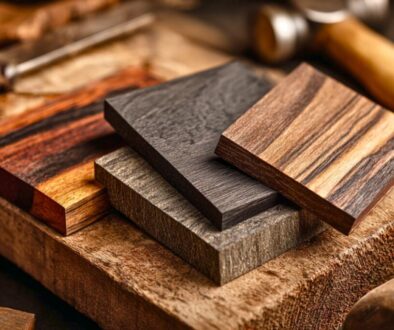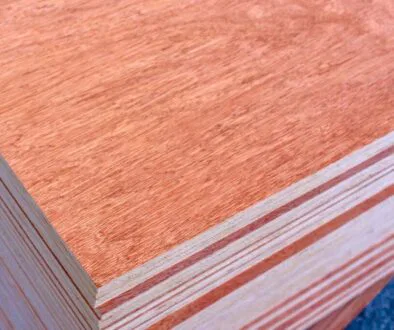Acacia Wood Vs Teak: Which Is Better For Outdoor Furniture?
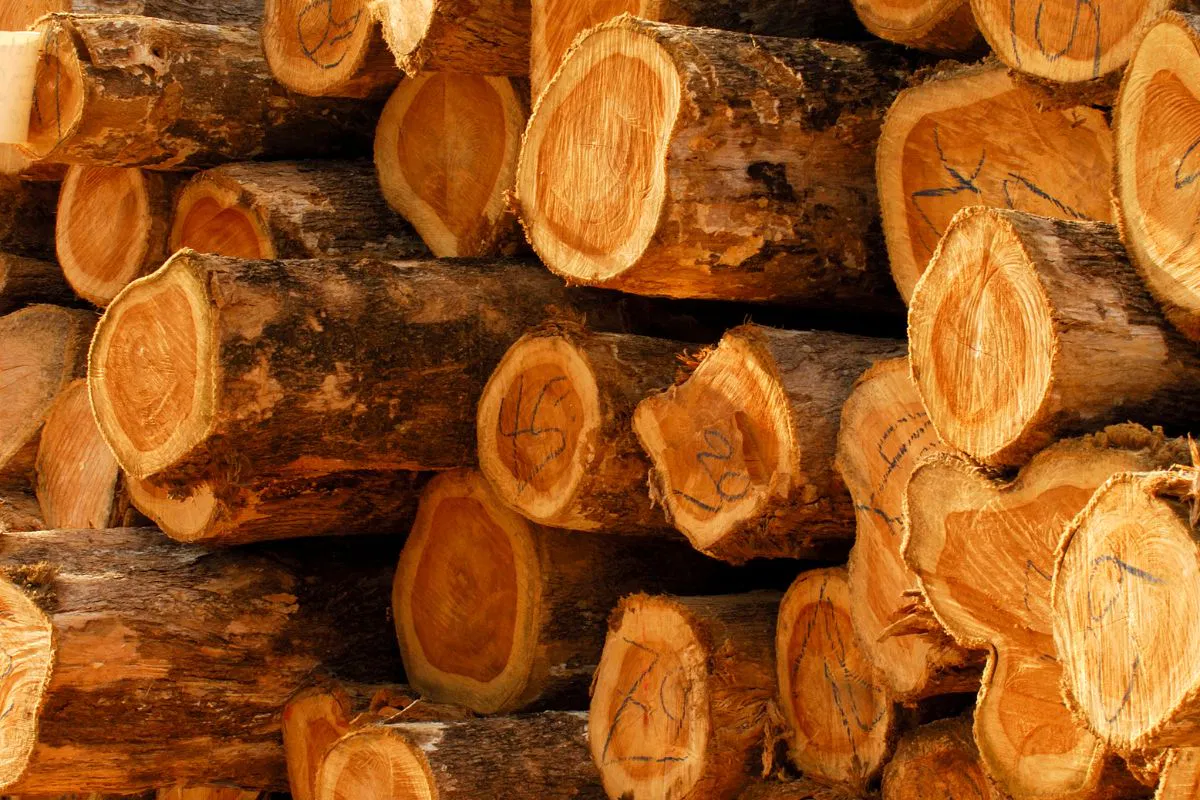
Published June 18, 2025
Are you struggling to decide between acacia wood and teak wood for your outdoor furniture? You’re not alone. Choosing the wrong material could leave you with furniture that quickly fades, cracks, or requires endless maintenance. This is especially true if you are refinishing furniture made out of these very specific types of wood. The good news? Both acacia and teak have their unique strengths. Knowing the key differences will help you select the suitable one.
In this article, we’ll provide a comparison of acacia wood vs teak wood to help you decide which is the ideal option for your outdoor space.
What Is Acacia Wood?
Acacia wood is a robust and durable hardwood. It comes from trees such as Acacia Koa and Acacia Blackwood, which are found in Africa, Australia, and Asia. Known for its strength and distinctive grain, acacia wood boasts a unique appearance. Its color ranges from warm amber to deep reddish-brown, adding natural elegance to furniture.
This versatile wood is commonly used for flooring, outdoor furniture, and indoor living pieces. Its broad, intricate grain patterns and rich hues create a timeless, natural charm. The wood’s color palette varies from light yellow to dark brown, with subtle tonal shifts that enhance its texture and character.
Based on the expertise of US Vintage Wood in determining distinct characteristics of wood, it is confirmed that the Acacia wood is packed with natural oils that protect it from the elements. These oils prevent shrinking, cracking, and splintering. They keep the wood durable and vibrant for years. Acacia’s oils also make it resistant to pests like termites and even fire damage.
Acacia wood for outdoor furniture strikes a balance between affordability and quality. It costs more than hardwoods like oak or maple but less than exotic woods like mahogany or rosewood. Acacia is also a more affordable alternative to teak due to its widespread availability and rapid growth. Prices vary widely, with outdoor dining tables starting at around $2,000.
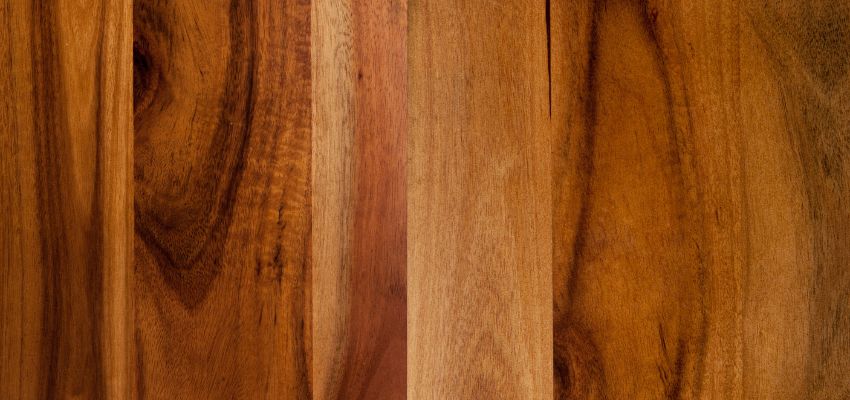
Advantages Of Acacia Wood
- Affordable elegance. Acacia wood stands out for its budget-friendly price, offering an excellent balance of strength and beauty. While it may not rival teak in durability, it delivers exceptional value at a fraction of the cost.
- Eco-friendly and sustainable. With its rapid growth, acacia is a renewable and environmentally friendly resource. Choosing acacia furniture allows you to enjoy stunning design while minimizing your environmental impact.
- Timeless aesthetic appeal. Acacia features rich color variations and striking grain patterns. It creates a visually stunning look. Its natural warmth adds charm to any outdoor space. Pair it with earthy tones or vibrant fabrics for the perfect touch.
Drawbacks Of Acacia Wood
- Vulnerability to moisture. While acacia wood offers some natural water resistance, it’s not entirely waterproof. Prolonged exposure to rain or high humidity, especially without proper treatment, can result in warping or splitting over time. This is why, even though acacia is considered the best wood for furniture making, handling this type of wood with the right level of care is critical to protecting its quality for a longer span of time.
- Ongoing maintenance. To preserve its finish and enhance its moisture resistance, acacia wood requires regular cleaning and periodic application of oil. Without consistent care, its durability in outdoor settings is significantly reduced.
- Reduced longevity if untreated. Compared to teak, untreated acacia furniture has a shorter lifespan, particularly in extreme climates. Excessive heat can dry it out, while high humidity can cause warping or other types of damage.
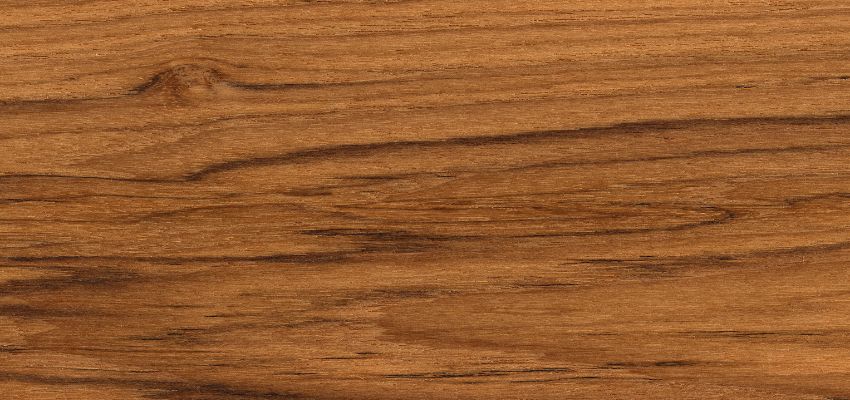
What Is Teak Wood?
Teak is a high-quality hardwood from the teak tree (Tectona grandis). It’s native to South and Southeast Asia, specifically in Myanmar and India. Among its varieties, Burmese teak is the most widely grown and sought after. Teak trees thrive in tropical forests, where they can live up to 100 years and grow as tall as 130 feet.
Teak wood is known for its durability. It’s highly weather-resistant and contains natural oils that repel water, pests, and decay. These characteristics made it the material of choice for building ships in the past. Today, teak’s long, straight grain and warm, golden-brown hue make it a favorite for modern outdoor furniture.
Teak furniture is the gold standard for outdoor spaces. It offers unmatched durability and elegance. However, teak often comes with a higher price tag. Outdoor lounge sets made of teak can range from around $1,900 to $4,800. While expensive, teak’s longevity makes it worth the investment. It lasts for decades, saving you from the need for frequent replacements.
Advantages Of Teak Wood
- Outstanding weather resistance. Teak sets the standard for outdoor durability. Its natural oils create a protective barrier against moisture, UV rays, and even salty coastal air, making it resilient in virtually any environment.
- Low maintenance. Caring for teak furniture is simple—regular cleaning is usually all it needs. As it ages, it develops a beautiful silvery-gray patina, all while maintaining its resistance to weather, pests, and decay.
- Exceptional longevity and timeless elegance. Teak’s unmatched durability ensures it can last for generations without losing its beauty. Whether you preserve its warm golden tones or let it age naturally, teak furniture exudes a timeless charm.
Drawbacks Of Teak Wood
- High cost. Teak wood is popular for its stand-out quality, but that comes with a high price tag. However, its durability and prolonged lifespan often justify the investment over time.
- Limited availability. Teak is less abundant compared to other woods, such as acacia, which contributes to its higher cost. Additionally, sourcing sustainably harvested teak furniture can be a challenge.
- Sustainability concerns. Teak production has been historically linked to issues like unsustainable and illegal logging. To ensure responsible sourcing, opt for teak furniture certified by the Forest Stewardship Council (FSC).
Acacia Vs Teak: Head-To-Head Comparison
Selecting the right wood for your furniture can be challenging, especially when comparing acacia and teak. Both have unique strengths and drawbacks. Here’s a quick comparison to help you make a decision.
Durability And Weather Resistance
Teak is unmatched in terms of weather resistance and overall longevity. Its natural oils repel water and prevent cracking or swelling, making it perfect for outdoor furniture in any climate. Acacia wood durability, while decent, is better suited for mild conditions. It needs extra care to protect against moisture damage.
Maintenance And Care
Teak’s low maintenance is a significant advantage. A simple wash with soapy water keeps it in shape, and its natural patina can be reversed if desired. Acacia wood, by contrast, demands more frequent cleaning and oiling to prevent cracks and preserve its appearance.
Cost And Value For Money
Acacia is the more wallet-friendly option, making it a practical choice for budget-conscious buyers. However, teak’s durability justifies its higher upfront cost, as it may last decades longer than acacia.
Sustainability And Eco-Friendliness
Acacia earns points for sustainability thanks to its fast-growing, renewable nature. While teak can also be sustainably sourced, consumers need to ensure it carries FSC certification to avoid contributing to environmental concerns.
Aesthetic Appeal And Style Options
Aesthetic preferences often depend on design goals. Acacia’s varied grain and color make it a showstopper, while teak’s understated, fine grain suits modern and minimalist styles. Both develop a unique charm over time, with teak transforming to a silver patina and acacia darkening slightly.
Frequently Asked Questions
Which wood lasts longer: acacia or teak?
Teak outperforms acacia in longevity, with a lifespan of up to 75 years, compared to acacia’s 5-15 years lifespan when used outdoors.
Is acacia a good alternative to teak?
Acacia can be a cost-effective choice for shaded or mild environments, but it lacks the durability and weather resistance that teak offers.
How should I maintain acacia and teak furniture?
Acacia requires regular cleaning and oiling to maintain its appearance and durability. Teak, on the other hand, requires basic cleaning and can be treated using teak oil or allowed to age naturally into an attractive gray patina.
Is acacia wood waterproof?
Acacia wood is not entirely waterproof, but it’s highly water-resistant due to its dense, natural oils. Proper sealing and maintenance can enhance its durability against moisture.
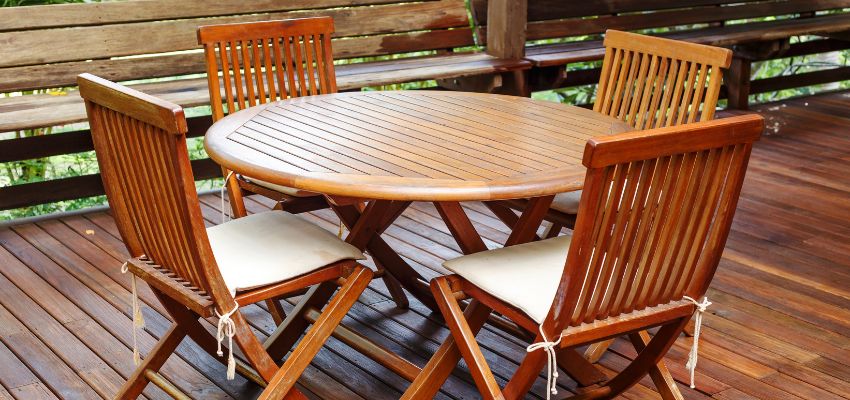
Acacia Or Teak—What’s Best For Your Outdoor Escape?
Both acacia and teak offer something special for outdoor furniture. In an acacia wood vs teak wood comparison, acacia stands out for its affordability and style, while teak reigns supreme for durability and low maintenance. When choosing between the two, consider your climate, budget, and desired aesthetic. Investing in high-quality materials ensures your outdoor haven remains beautiful and functional for years to come.
Whether you’re drawn to the rustic charm of acacia or the enduring elegance of teak, Vintage & Specialty Wood provides a curated selection of reclaimed and specialty woods expertly crafted to meet your unique needs.
Hire The Timber Experts For Your Next Project
Vintage & Specialty Wood should be your source of the highest quality timbers from around the world. When it comes to fabricating and installing reclaimed wood or specialty wood products in your home, we don’t cut corners. We offer many reclaimed wood and specialty wood products such as Douglas Fir, white oak, and much more. We also offer timber framing and wood flooring services as well. Contact our team today to speak to a timber expert about what Vintage & Specialty Wood can do for you.

This Blog Is Fact Checked
This content has undergone meticulous fact-checking by our team of internal experts. Gain a deeper understanding of the high editorial standards we uphold on our website here.

About The Author
Experience, exploration, and knowledge are the hallmarks of writer Rei Bayucca. Her dedication to crafting articles that both inspire and educate will leave you thinking long after you’ve finished reading.

